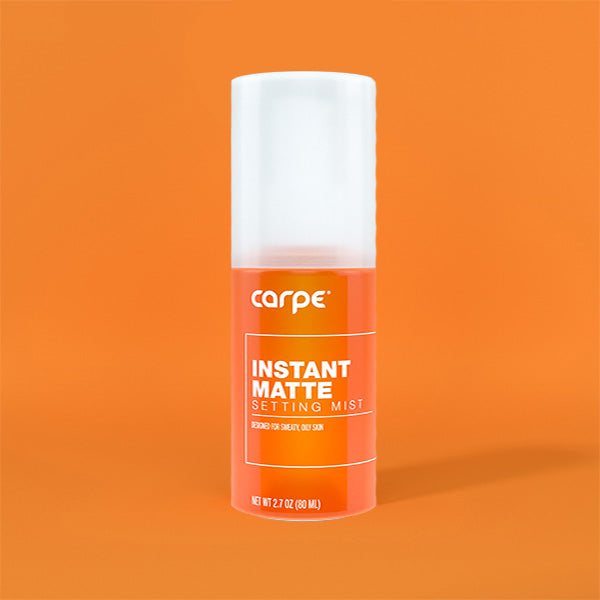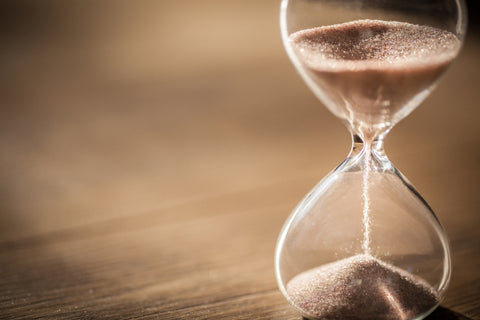Excessive sweating can make dressing a daily challenge, and this is especially true for people who have hyperhidrosis. Hyperhidrosis is a medical condition in which the body sweats in excess of what it needs to maintain its temperature. People who have primary focal hyperhidrosis, the most common type, typically sweat profusely from their palms, soles, armpits, face, and sometimes groin. While heavy sweating is not immediately physically dangerous, it can greatly impact a person’s quality of life. This fact is demonstrated by the way hyperhidrosis affects a person’s relationship with clothing. Depending on where a person experiences the majority of their sweating, they can have various issues that arise like soaking, staining, and soiling of their clothing. They may also find that they are restricted in the type of clothing they can wear. Footwear can also become an issue, as excessive sweating of the feet can often cause someone to sweat through socks, destroy shoes, and make it difficult for them to walk in flip-flops and certain types of sandals. It is important for people with hyperhidrosis to learn how to effectively manage their sweat in order to improve their quality of life. This can be accomplished by pursuing medical treatments and managing hyperhidrosis with a doctor, or people can choose to manage their hyperhidrosis via alternative methods. One of these methods is to choose clothing that allows someone with hyperhidrosis to conceal, control, or absorb their excessive sweat so damage to clothing and self-esteem is minimized.[1]
Health Concerns
In most cases, hyperhidrosis is not physically dangerous, but wearing clothing on top of constantly moist skin can cause irritation, and occasionally a larger issue can develop. The worst case scenario would be if the irritation on the skin turned into an active skin infection. That would require immediate medical attention, and most likely antibiotics. There are other health issues that can arise from this situation as well, especially affecting the axillary region. When excessive moisture becomes trapped in the armpit, and is then exposed to consistent friction from clothing, cutaneous maceration can occur. Cutaneous maceration describes the breakdown of skin due to the constant presence of moisture. Axillary hyperhidrosis can also lead to a condition called bromhidrosis, which causes a person to emit an unpleasant odor when bacteria or fungi break down sweat on the surface of the skin. Bromhidrosis is worsened when clothing traps moisture and promotes the growth of microorganisms. Sweaty feet can cause the development of athletes foot, blisters, warts, infections and bromhidrosis when they are in shoes for a prolonged period of time. Most of these issues can be prevented by wearing clothing that allows for breathability, using footwear suitable for sweaty feet, and using over-the-counter topical treatments for hyperhidrosis.[1]
Material
The type of fabric that clothing is made out of is of great importance. Wearing breathable fabrics can reduce sweating and allow for ventilation when it inevitably does occur. For someone who is sweating frequently using natural fabrics like cotton and linen can make a big difference. They absorb sweat so it does not stick to the body and they allow for more airflow to cool the skin. If someone needs to wear a stretchy type of fabric they should pick a moisture wicking material (even if it has polyester) over a cotton and spandex blend as the moisture wicking weave will keep sweat away from the skin. In any other case, it is not advisable to wear polyester, rayon or other synthetic fabrics as these will trap sweat and cause it to pool in awkward areas. Silk is also a bad idea. It can also be helpful to wear moisture-wicking workout clothes when appropriate. Make use of the wide array of products available on the market today.
Styles That Conceal Sweat
There are many styles of clothing that can help those with hyperhidrosis feel more confident and, at the same time, help them to control their sweat. Below are some examples and ideas of the types of clothes that can be useful for someone with hyperhidrosis.
A shirt may sound like a simple thing, but it can be complicated to choose one when someone has pit stain problems. If someone is looking for a solid color to wear, they should choose a very dark or very light color to camouflage stains, like black, navy blue, white, brown or, surprisingly, pale pink. Plain white t-shirts can always can always work in a pinch. It is best not to choose colors like light gray or anything bright as these will highlight stains. Bold patterns are a good idea as they break up the visual field, try patterns like plaid, camo, floral and whatever other cool patterns you can find.
The style of a shirt matters too. Women can try a tank top with drop sleeve holes or strategically placed cutouts. Or if someone just want a t-shirt, they should go for a style with loose arm holes. Flowy blouses and tanks are in right now and they provide room to breathe and don’t pick up armpit stains easily. For men, it is a good idea to go with a t-shirt that isn’t too tightly fitted. If someone desires a fitted look they could wear an absorbent undershirt to prevent pit stains. If there is a need to get dressed up, there are brands, like Lawrence Hunt, Vardama and a few others that make sweat proof dress shirts for men. Sweat proof fabric technology is improving every day so look around for fabrics and fits specifically made for people with sweat issues.
Everybody wears pants so it’s important to have some that don’t cause uncomfortability and chafing issues . The other thing most people wear at some point are jeans, and they can be stuffy and sweaty. When choosing denim go for 100% cotton and pick a lighter weight weave. For men who need some variety, or dressier looking pants they should try to find moisture wicking styles. Some pants, like the Hurley Dri-Fit Worker (chino style pants) are actually made specifically for people who sweat using the same kind of technology they put into workout clothes. For women who want to wear leggings there are a ton of options, the important thing is to opt for moisture wicking material rather than tight spandex blended cotton that will keep moisture clinging to legs.
There are so many style options these days that it makes it much easier to find a dress style that both flatters your body and prevents sweat stains. If someone is interested in dresses, they should look for flowy styles that allow their body to breathe. Dresses are comfortable and airy so they help people to sweat less and they don’t pick up the sweat that does accrue. Dresses are a secret wepon for a sweat-prone woman so women should take advantage of them. When choosing a dress women should look for bold patterns, light colors and very dark colors. Many dress styles can accommodate sweaty armpits, so it is a good idea for a woman to find a styles she likes and to go with it. Spaghetti strap dresses, tank dresses, loose T shirt style dresses, empire waist dresses, and many other styles will work for those with hyperhidrosis. All of these styles provide breathability and will show less sweat.
Underwear
The groin can be a problem area for sweat so it is important to wear the right types of fabric when it comes to underwear. For women, there are a ton of new products available. Depending on a person’s personal preference anything from the classic cotton bikini to moisture wicking boy briefs will work. The brand Patagonia even makes a style called Active Mesh Boy Shorts that are made with new fabric technology. If someone is really struggling they can even use a pair of period underwear, which are made to absorb a ton of moisture and will keep your skin fresh and dry. There are a few great choices available to you available to men: airy boxers, moisture wicking boxer briefs or cotton briefs. Some sporting brands, like Adidas with their Sport Performance Climalite Boxer Brief Underwear, are making moisture wicking properties a regular feature of several of their underwear styles. If someone prefers typical boxers for a nice breeze, or briefs for stability then they should choose a natural cotton fiber as this should help keep everything more comfortable. If these methods are not enough, then there are hyperhidrosis treatments that people with excessive groin sweat can utilize. Certain antiperspirants can be used on the groin as they are made specifically for areas with sensitive skin.
Products that Soak Up Sweat
There are pads specifically made to soak up underarm sweat. These conveniently adhere to garments and can be used in cases where other measures may just not be enough. You can also use special powders on your feet to prevent moisture build up and irritation.
Sometimes sweat is just going to happen, so it is a good idea to bring back up clothes. If someone is going to be in a situation where sweating is inevitable they can bring a change of clothes to keep in their car or bag. It is also wise to keep a stash of helpful products like absorbent pads, antiperspirants, and a towel in case of emergency. Antiperspirants differ from deodorant because they actually block sweat from forming on the skin while deodorant masks the smell of body odor and contains antibacterial properties. It is often a good idea for someone with hyperhidrosis to use both, or a combination product. Hyperhidrosis can be managed by alternative methods, like wearing certain types of clothing, so that someone’s life is less impacted by the constant sweating that is part of their daily life.
Sources
- Pariser, D. M. (2014). Hyperhidrosis (4th ed., Vol. 32). Philadelphia, PA: Elsevier.
- Huddle, J. R. (2014). Hyperhidrosis: Causes, Treatment Options and Outcomes. New York, NY: Nova Science.






16790753702383.jpg?v=1679075372)

16790746985853.jpg?v=1679074700)


16790757289763.jpg?v=1679075731)











